Worldwide, coral reefs are declining at an alarming rate. This is most apparent in the Caribbean, where reefs have been transformed from coral gardens – 60-70% of the bottom was carpeted in thickets of elkhorn coral and staghorn coral, mountainous boulders of star coral and foliaceous plates of lettuce coral in the 1970s- to meadows of fleshy algae, or macroalgae with less than 5% living coral cover. There are similar examples in the Pacific. We’ve seen the most majestic of reef environments in one location, while a reef located a few km away is devoid of coral.
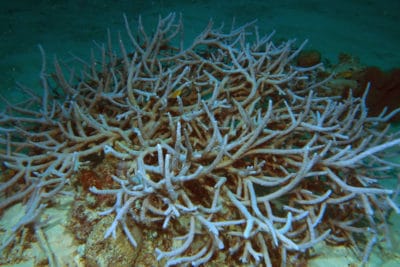
Fragile branching corals such as this Acropora (staghorn coral) tend to grow in sheltered locations.
Why is this happening? Climate change, especially increased sea water temperatures are the most severe global cause of decline, but many other localized impacts such as overfishing, destructive fishing, sedimentation and pollution associated with land-based activities and a host of other factors are also responsible. There are natural causes as well. We’ve seen many areas devastated by crown of thorns sea stars. And we’ve witnessed coral disease outbreaks. Storms can also cause catastrophic losses of corals and destruction of the reef framework.
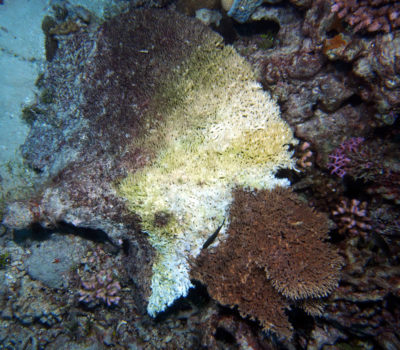
Coral fragments that are broken and toppled during storms may be abraded or buried by sediment and they are often more susceptible to coral diseases such as the table acroporids shown here.
(Click thru on image for more detail.)
Tropical Cyclone Ita Damage to the Great Barrier Reef
In April, 2014 a particularly devastating storm, Tropical Cyclone Ita, attained peak intensity as a Category 5 cyclone as it moved away from Papua New Guinea and tracked south-southwest, making landfall near Cape Flattery, and then moving offshore past Lizard Island.
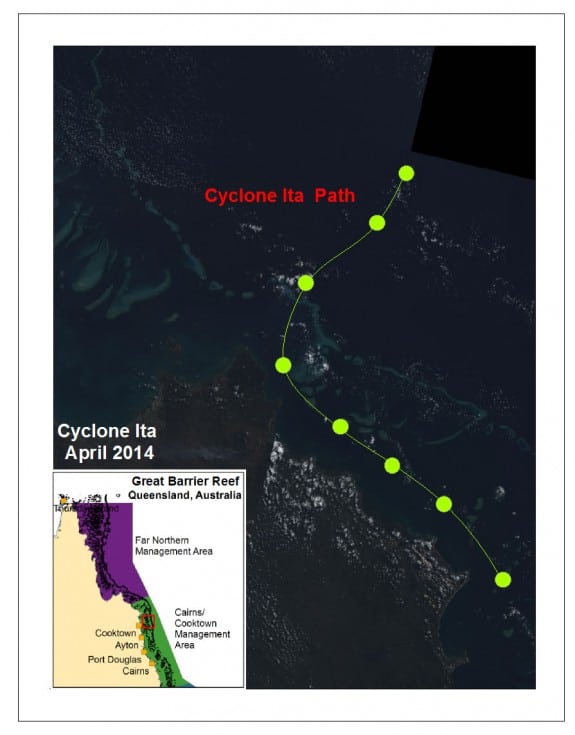 Path of Tropical Cyclone Ita
Path of Tropical Cyclone Ita
(Click thru on image for more detail.)
Today’s dive, at the southwestern end of Hicks Reef, we witnessed considerable storm damage. Thickets of staghorn coral had been crushed and their skeletons littered the bottom. Large massive corals and entire chunks of reef rock had tumbled down the reef accumulating at the base of the reef slope. We measured rubble piles that were more than 70 cm deep.
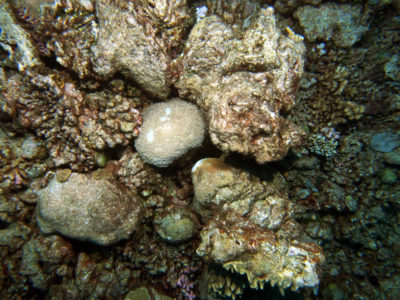
Boulder corals that were detached from the reef and accumulated at the base of the reef slope.
(Click thru on image for more detail.)
While the damage was alarming, reefs have weathered storms throughout their history and in absence of other stressors they demonstrate remarkable resilience, rebounding in a matter of years. Given the high survival of coral fragments we observed among the rubble piles, we expect similar rates of recovery on Hicks Reef.
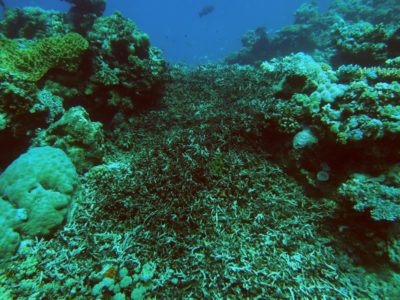
A thicket of staghorn coral that was flattened by Cyclone Ita.
(Click thru on image for more detail.)
Photos by Andrew Bruckner.